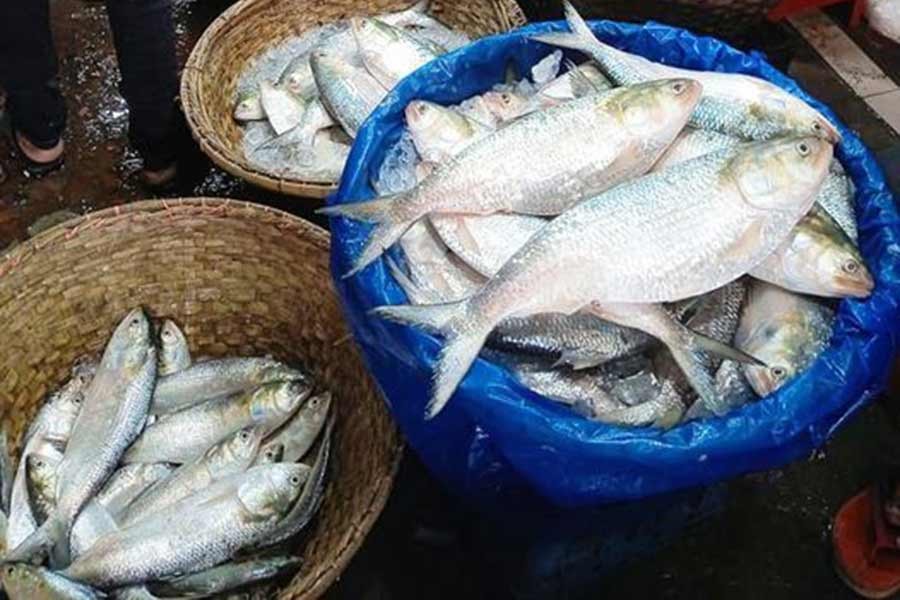Hilsa catching, selling and transportation resumed on Saturday as a 22-day government ban ended on Saturday.
A total of 600 maunds of Hilsa came to Chandpur’s Bara Station Fish Ghat, the biggest Hilsa market of the country, from Hatia, Bhola, Charfasion and other coastal areas on trawlers and ships since this morning, A Bari Jamadar Manik, President of the Chandpur Fisheries Association, said.
Besides, Hilsa from the confluence of the Padma and the Meghna rivers in Chandpur also arrived at the market in small amounts, according to UNB.
Visiting the market, UNB found that most of the Hilsa weighed 800 g to 900 g. A 900g Hilsa fish was selling at Tk 900, while 1kg and 2kg Hilsa were selling at a rate of Tk 1,100 to Tk 1,500.
Many people were seen buying fresh Hilsa and sending them off to various places across the country.
“I’m taking around 50-60 maunds of Hilsa to Jamalpur via Karwan Bazar, Tongi, Baipail and Gazipur on my truck,” said Azizul Haque, a truck driver.
The 22-day government ban on hilsa catching, selling, hoarding and transporting came into effect on October 7, with a view to boosting its production.
The ban covered hilsa sanctuaries in six districts -- Barishal, Chandpur, Laxmipur, Bhola, Shariatpur and Patuakhali.
During the ban, around 50,000 fishermen remained unemployed and were allocated 25kg of rice each, which was not enough for them, said local fishers.
Taukir Ahmed, an official from the control room of the district fisheries office, said around 212 fishermen were sent to jail during the ban period in 178 cases.
Besides, 41,855 metres of current nets were seized and destroyed, said head of Chandpur Naval Police Mohammad Kamruzzaman.
Hilsa, the national fish of Bangladesh, is recognised as a certified patented product of Bangladesh. The marine fish goes to rivers in Bangladesh to lay eggs.
The fish is very popular both in Bangladesh and West Bengal. About 75 per cent of the world's hilsa is netted in Bangladesh.
Chandpur is considered one of the largest trading hubs of hilsa in Bangladesh as the fish from the Padma river is much more popular than the ones that come from other rivers.
Nearly 6 lakh people of Bangladesh are involved in catching hilsa directly while 20-25 lakh people are involved in transporting, selling and other activities indirectly.
Thanks to government initiatives, production of hilsa has increased to 5.65 lakh metric tonnes in 2020-21 fiscal year while it was 2.98 lakh metric tonnes in 2008-09 FY.
Last year, nearly 51.76 per cent of mother hilsa were able to lay eggs during the ban period, boosting production and hilsa export to India.


